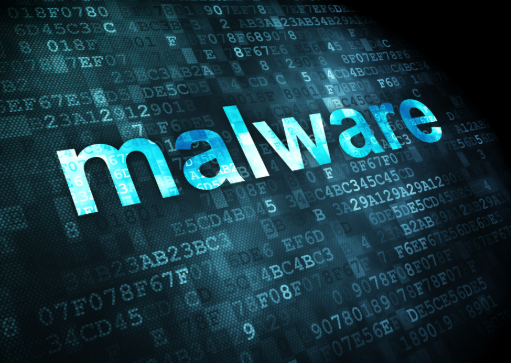Malware on your website is more than just a nuisance—it can cripple your online presence, compromise user data, harm your SEO rankings, and erode trust in your brand. Whether you’re running a small business site, a WordPress blog, or an e-commerce store, detecting and removing malware promptly is essential to maintaining website security.
In this post, we’ll explore how to detect malware, remove it safely, and protect your site from future infections. Let’s walk through the process step by step.
What Is Website Malware?
Malware (malicious software) refers to any code or software designed to damage, disrupt, or gain unauthorized access to a system or website. Common types of website malware include:
Backdoors – secret paths for hackers to re-enter your site
Phishing pages – fake login pages hosted on your domain
SEO spam – injected links or keywords to boost another site’s ranking
Defacements – visual changes to your site’s content
Malicious redirects – sending your users to shady websites
Ransomware – encrypts files and demands payment
These threats can lead to Google blacklisting, loss of traffic, and legal consequences—so malware detection and removal must be a top priority.
How to Detect Malware on Your Website
Early detection is critical. Here are several ways to detect malware on your site:
1. Use a Website Malware Scanner
There are free and premium tools available that scan your website for known threats. Some of the best website malware scanners include:
-Sucuri SiteCheck (https://sitecheck.sucuri.net)
-Quttera Website Malware Scanner
-VirusTotal (for scanning website files or URLs)
-Wordfence (for WordPress users)
These tools check your site for blacklisting status, injected spam, malicious scripts, and more.
2. Monitor Your Site’s Behavior
Sometimes, malware signs are visible to users or admins. Look out for:
-Unexpected redirects to spammy websites
-Suspicious new admin users or plugins
-Altered files or unknown folders in your root directory
-Increased server resource usage or CPU load
-Google Search Console warnings or “This site may be hacked” messages
3. Use Security Plugins (for WordPress)
If you’re running a WordPress site, security plugins like:
-Wordfence
-iThemes Security
-All In One WP Security
can run real-time scans and alert you about suspicious file changes or login attempts.
4. Review Your Server Logs
Check your server access and error logs for unusual patterns, such as:
-Frequent POST requests to unknown PHP files
-Login attempts from foreign IPs
-Unauthorized script executions
Analyzing logs manually or with log monitoring tools like Logwatch or GoAccess can uncover hidden malware activity.
How to Remove Malware from Your Site
If malware is found, don’t panic. Here’s how to safely remove malware from your site:
Step 1: Back Up Your Site
Before taking any action, create a full backup of your website (files and database). If anything goes wrong, you’ll at least be able to restore to the current state.
Use backup plugins like:
-UpdraftPlus (for WordPress)
-JetBackup (on cPanel)
-Or manually download files via FTP
Step 2: Put Your Site in Maintenance Mode
To protect your visitors while you clean up the site, temporarily disable access by:
-Enabling Maintenance Mode with a plugin
-Redirecting traffic using .htaccess rules
-Blocking external access via your hosting dashboard
Step 3: Scan and Clean Infected Files
Use tools like:
-MalCare (automated malware removal)
-Wordfence Premium (real-time removal)
-ImunifyAV (for cPanel-based hosting)
Or manually clean your site:
-Compare files to original theme/plugin versions
-Delete suspicious scripts, such as unknown .php, .ico, or .js files
-Remove malicious code like base64-encoded strings or eval() functions
For WordPress, reinstall the core files and update all themes and plugins to ensure you’re running clean, supported code.
Step 4: Reset All Passwords and Credentials
Once cleaned, immediately reset:
-WordPress admin and user passwords
-FTP/SFTP credentials
-cPanel and hosting passwords
-Database user credentials
This ensures any stolen login details can’t be reused by attackers.
Step 5: Check and Remove Hidden Backdoors
Backdoors are often left behind by attackers to regain access later. Common hiding spots include:
-wp-config.php (WordPress)
-Theme files like functions.php
-Hidden .php files in /uploads/ directories
Search for abnormal code like:
eval(base64_decode(…))
or
preg_replace(“/.*/e”,…)
Delete or sanitize these scripts completely.
How to Prevent Future Malware Infections
Once your site is clean, take these preventative measures to avoid getting reinfected.
1. Install a Web Application Firewall (WAF)
Services like Cloudflare or Sucuri Firewall protect your website from malicious traffic, bots, and code injection.
2. Keep Software Updated
-Regularly update WordPress, plugins, and themes
-Remove unused plugins or outdated tools
-Avoid using nulled or pirated software—it’s a malware goldmine
3. Use Strong Passwords & 2FA
Implement strong passwords and two-factor authentication on all admin accounts. Use tools like Google Authenticator or Authy for 2FA integration.
4. Perform Regular Malware Scans
Schedule daily or weekly scans using security plugins to catch infections early. Some services also offer malware monitoring and automatic removal.
5. Set File Permissions Properly
Restrict file and directory permissions to reduce vulnerability. As a rule:
Directories: 755
Files: 644
Configuration files: 600 or stricter
Conclusion
Detecting and removing malware from your website may seem overwhelming, but with the right tools and steps, even non-technical users can protect their digital property. Use free malware scanners like Sucuri or Wordfence to monitor your site, and don’t hesitate to seek professional help for major infections.
By combining regular security checks, strong credentials, and a proactive attitude, you can reduce the risk of infection and maintain trust with your visitors.

